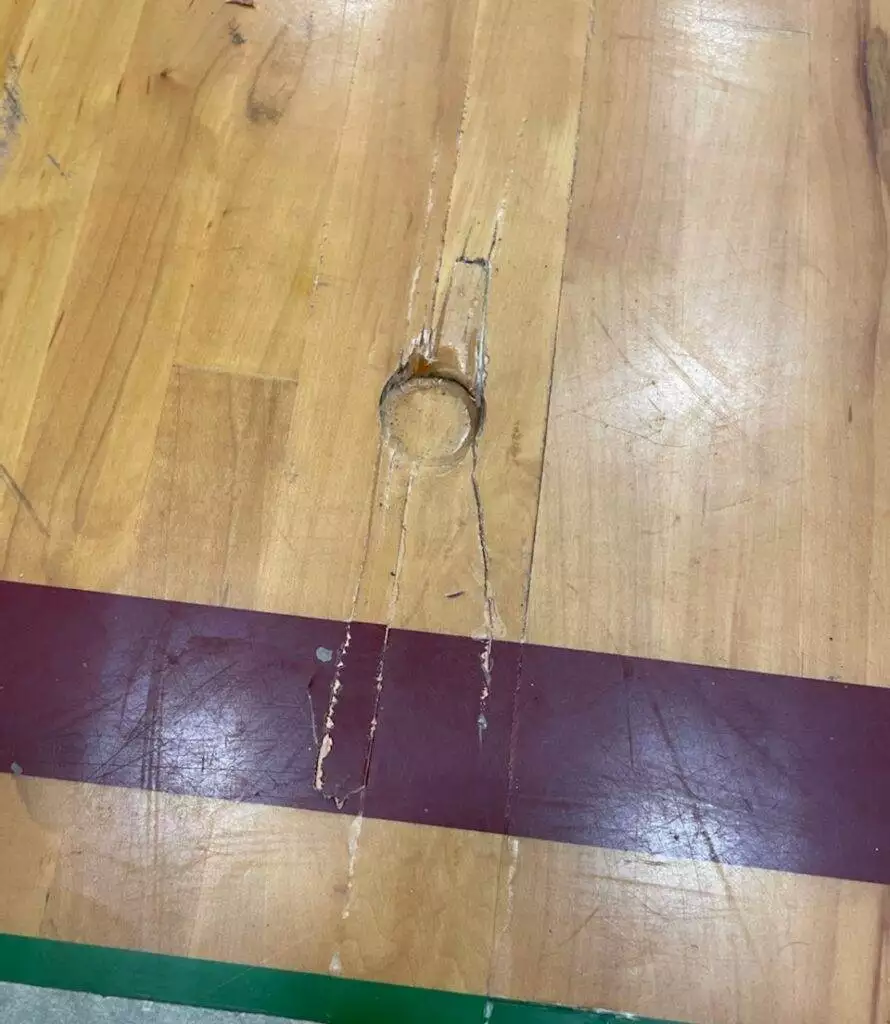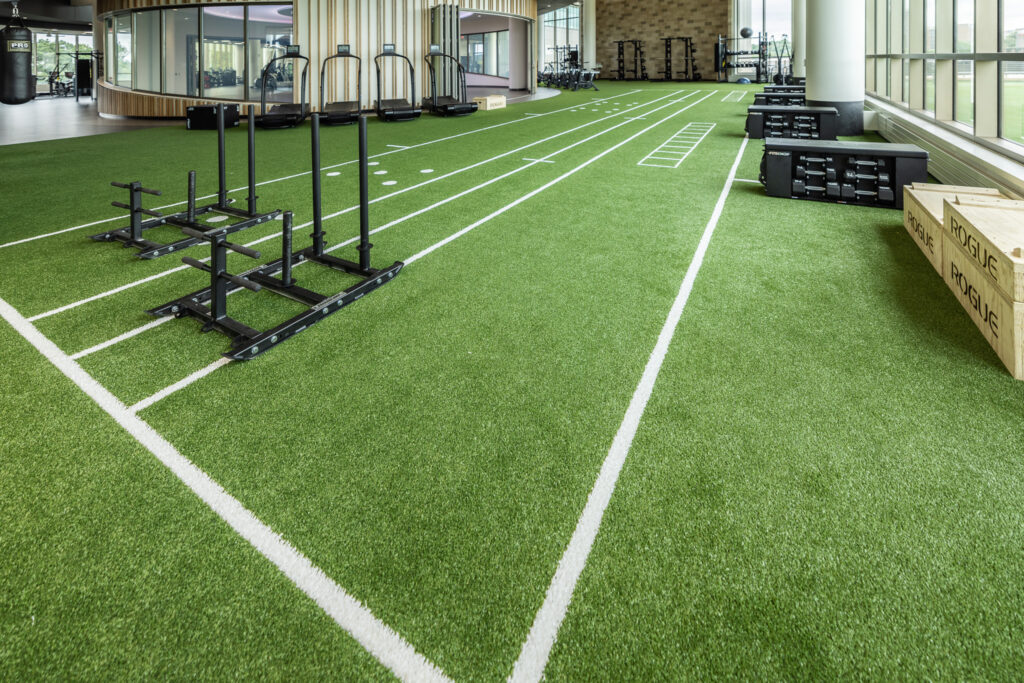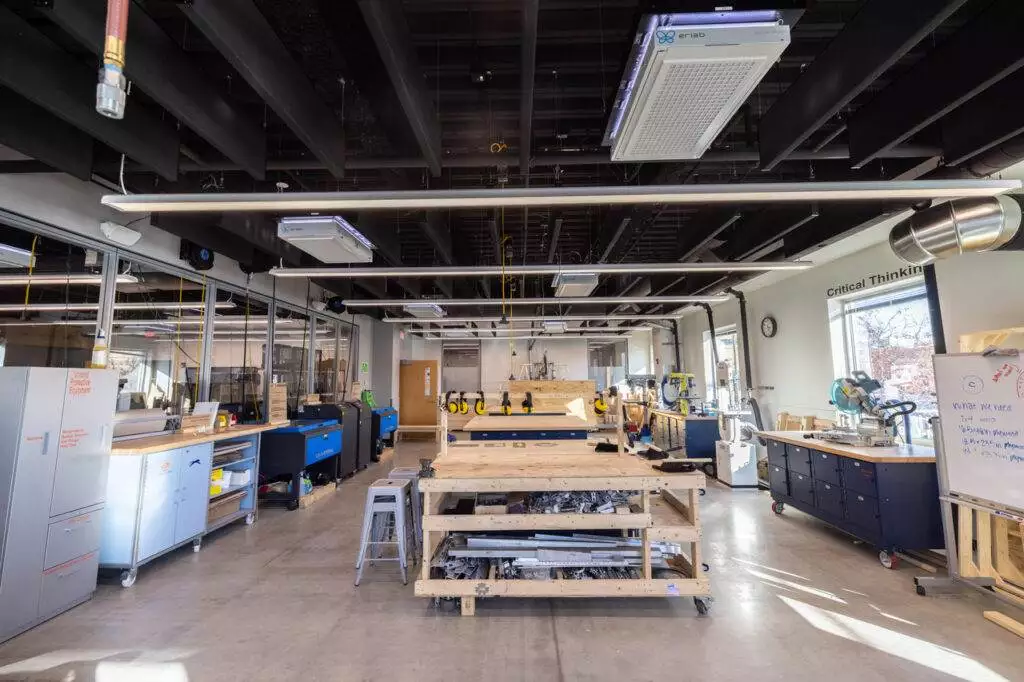Blogs & News
- Category: Featured, Flooring
- DATE: March 29, 2023
6 Signs You May Need to Replace Your Gym Floor
Wear and tear on gym flooring is normal, and while you can extend your gym floor’s longevity through preventative care, the floor will need to be replaced at some point. Damage can also be increased by other factors, such as water damage, bleachers and sporting equipment, and other causes in the area.
Gym flooring is made of many materials, and while this can vary how long the floor lasts or how much a full replacement costs, there are some clear signs of what you can look for that may indicate it is time to replace your floor. Here are six signs to keep an eye out for.
1. Cracking Finish
If you notice the finish on your gym floor has any cracking, flaking, chipping, or peeling, take a closer look at the entirety of your floor. While these signs may not necessarily mean the next step is a total gym floor replacement, they could indicate the need for refinishing. It could also signify deeper damage to the floor if it has gone too long without upkeep.
2. Gaps and Separation
With wood gym flooring, it is expected to have some movement throughout the seasons due to changes in the environment. This environment must stay as stable as possible to keep your gym floors in the best condition. Too much humidity will cause wood boards to expand, while too dry of air will lead to gaps between boards.
By checking your HVAC system, you can ensure humidity stays at a stable range of 35-55 percent. If your humidity level is commonly out of that range, you may notice more movement on your flooring. Over time, this can lead to major gaps and cracks, which may cause injuries to both athletes and spectators. Keeping a level humidity in your gym is the easiest way to prevent the separation of wood flooring.
3. Water Damage
If you observe cupping or crowning on your floors, that is a clear sign of water damage. This is when wood floorboards are warped, making the edges uneven with the center of the board. If the water source is removed, the flooring may return to its natural state.
More severely, buckling floors due to water damage is harder to reverse. This could be due to your gym flooding, which allows your flooring system to absorb water and warp to a shocking degree. Depending on the situation, this type of water damage may require a full gym floor replacement.
4. Damage to the subflooring system
Gyms often have heavy sporting equipment or bleachers being moved around often, which can cause damage to the flooring system. Leaving heavy items in one area can also lead to warping or damage for long periods. This can affect the surface finish and damage the flooring system’s structural components.
Aside from heavy equipment, water from excessive mopping or flooding can also seep into the floor, causing internal issues. It is good to remember that factors that have affected the top layer can also affect the entire flooring system.

5. Old age
Preventative care is important to maintaining the functionality of your flooring, but there are only so many repairs, recoats, or patches before a replacement is necessary. In the long run, a new floor may be more cost-friendly than continuously fixing small flooring pieces if it has been a while since it was completely replaced. An athletic flooring professional like our team at H2I Group can help gauge the relative health of your gym floors.
Another reason an outdated floor may be replaced is if there have been technological advancements since installation. Those advancements could affect safety, shock absorption, and more. A competitive space should be upgraded to stay on par with other facilities. Safety advancements might be worth the replacement if your floor is a commonly used space!
6. Change for the use of space
Flooring systems are often designed specifically for what the space is used for. If this changes, it might also call for your flooring to change. This could either mean the space is used differently than intended or a new area will be built to take over this space’s main use. For example, if you initially put in hardwood because this floor was used as a basketball court and recently has other groups using it, it might make sense to put in a synthetic floor. Not only will it be easier maintenance, but it is more accommodating to future additional activities. Commonly, those building new spaces for their basketball/volleyball courts will turn their old floor into a synthetic material instead, which allows the space to become a new multipurpose area.
Do I Need Repairs or a new gym floor?
Having one or more of these six signs doesn’t condemn you to replace the entirety of a new floor yet. Daily and yearly maintenance can help extend your flooring. Wood gym floors should be recoated each year, and after around 12-15 years, it is typically time for a sanding and refinishing. These steps will keep your floor in good health.
If you aren’t sure what your next steps are, an athletic flooring professional can help you determine what is best. Our experts at H2I Group can inform you of your options, whether that be: patching, recoating, refinishing, replacing a section, sanding, or total replacement. Contact us today to consult an expert.
recent blogs



GET STARTED
LET’S TALK ABOUT YOUR PROJECT TODAY
Are you in need of expert guidance for your building project? H2I Group’s experienced professionals are here to assist you with any questions or concerns you may have. Contact us today to learn more about our services and how we can help you achieve your goals.

